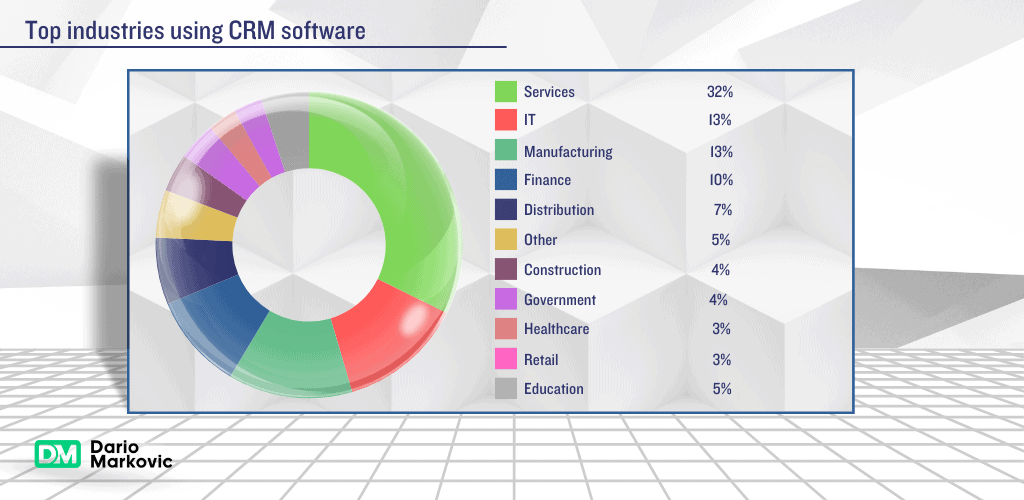CRM Business Automation Integration: Why?
CRM business automation integration is where it’s at for modern enterprises. By combining customer relationship management (CRM) systems with automation tools, companies can make their operations smoother, improve customer interactions, and get more done overall.
This setup lets businesses automate those tedious, repetitive tasks, handle customer data better, and give clients a more personalized experience.
In this blog, I’ll explore this topic, all its ins and outs, and hopefully, by the end of it, you’ll know enough about it to know where to start learning more. Maybe start with this blog here, which I wrote a while back.
Summary: What I Will Discuss Here
Understanding CRM Business Automation Integration: Explanation of what CRM business automation integration is and its importance in streamlining operations and enhancing customer interactions.
Step-by-Step Guide to Integration: Detailed instructions on integrating CRM business automation, including assessing needs, choosing the right tools, training your team, and optimizing the system.
Overcoming Common Challenges: Discussion of common challenges such as data synchronization issues, user adoption resistance, and cost management, along with solutions based on personal experience.
The Benefits of CRM Business Automation Integration
Integrating CRM with business automation tools can really make a difference. For starters, it saves a ton of time by taking care of routine tasks like data entry, follow-up emails, and scheduling. This means your team can focus on more important, strategic work. Plus, it boosts data accuracy since automated systems cut down on human errors.
And let’s not forget about customer satisfaction—automated, personalized communication ensures your customers feel valued and attended to.
Key Features of CRM Business Automation Integration
When considering CRM business automation integration, it’s essential to understand the key features that make it so powerful. These features include:
Automated Workflows: Streamline processes by automating tasks such as lead nurturing, follow-ups, and customer onboarding.
Data Synchronization: Ensure customer data is consistently updated across all platforms, providing a single source of truth.
Personalized Communication: Use automation to send customized messages based on customer behavior and preferences.
Analytics and Reporting: Gain insights into customer interactions and business performance through automated reports and dashboards.
Statistics on CRM Business Automation Integration
The importance of CRM business automation integration is underscored by various compelling statistics that highlight its growth, adoption, and impact on business operations. The CRM industry is projected to be worth over $88 billion in 2024.
This significant market growth underscores the increasing reliance on CRM systems across various industries, driven by the need for efficient customer relationship management and business automation.
Adoption rates are also impressive, with 87% of businesses using cloud-based CRM platforms. This shift to cloud-based solutions allows for greater flexibility and accessibility, enabling teams to access CRM data from anywhere.
Furthermore, 82% of organizations use CRM systems for sales reporting and process automation, demonstrating the critical role these systems play in streamlining business operations.
Device accessibility is another key factor, with 81% of CRM users accessing their CRM from multiple devices1. This multi-device usage ensures that sales and customer service teams can stay connected and responsive, regardless of their location.
Additionally, 92% of businesses say CRM software plays an important role in achieving their revenue goals, underscoring the direct impact of CRM systems on business profitability.
Effective sales organizations are 81% more likely to use a CRM platform, highlighting the correlation between CRM usage and sales success. The ROI of a CRM software system, when properly implemented, can exceed 245%, making it a highly valuable investment for businesses.
Moreover, 50% of teams improved their productivity by using a mobile CRM, showcasing the efficiency gains that mobile access can provide.
Overall CRM usage has seen a significant increase, rising from 56% in 2018 to 74% in 2019. This upward trend indicates a growing recognition of the benefits that CRM systems offer. About 90% of sales teams now implement CRM tools, further emphasizing the widespread adoption of these systems in sales operations.
CRM software can also increase conversion rates by 300%, demonstrating its effectiveness in driving sales and revenue growth.

Key Numbers
- CRM industry worth over $88 billion in 2024
- 87% of businesses use cloud-based CRM platforms
- 82% of organizations use CRM systems for sales reporting and process automation
- 81% of CRM users access their CRM from multiple devices
- 92% of businesses say CRM software plays an important role in achieving their revenue goals
- Effective sales organizations are 81% more likely to use a CRM platform
- ROI of a CRM software system can exceed 245%
- 50% of teams improved productivity by using a mobile CRM
- Overall CRM usage increased from 56% in 2018 to 74% in 2019
- About 90% of sales teams implement CRM tools
- CRM software can increase conversion rates by 300%
These statistics highlight the growing reliance on CRM automation integration to drive business success. The data clearly shows that CRM systems are not just a trend but a fundamental component of modern business strategies.
As businesses continue to adopt and integrate these systems, efficiency, productivity, and revenue growth benefits become increasingly evident. The significant ROI and productivity improvements reported by companies using CRM systems underscore the value of investing in these technologies.
Furthermore, the widespread adoption across various industries and the increasing usage rates reflect the essential role of CRM systems in achieving business objectives and maintaining competitive advantage.
Steps to Implement CRM Business Automation Integration
Implementing CRM business automation integration involves several key steps:
Assess Your Needs: Identify the specific tasks and processes that can benefit from automation.
Choose the Right Tools: Select a CRM system and automation tools that align with your business requirements.
Plan the Integration: Develop a plan outlining how the CRM and automation tools will work together.
Train Your Team: Ensure that your employees are well-versed in using the integrated system.
Monitor and Optimize: Continuously monitor the system’s performance.
Common Challenges and Solutions
While CRM business automation integration offers numerous benefits, it also comes with its challenges. Some common challenges include:
- Data Integration Issues: Ensuring seamless data synchronization between CRM and automation tools can be complex. Different systems may store data in various formats, making it easier to integrate without losing information or accuracy.
- User Adoption: Employees may resist adopting new systems due to unfamiliarity or perceived complexity. This resistance can hinder the integration’s effectiveness and reduce the overall benefits.
- Cost: Implementing and maintaining integrated systems can be costly. Businesses need to evaluate the cost-benefit ratio to justify the investment.
- Integration Complexity: Integrating CRM with other business automation tools can be technically challenging, primarily if the systems use different data structures or APIs.
- Data Quality and Consistency: It is crucial to maintain high-quality and consistent data across integrated systems. Data quality can lead to accurate insights and effective automation.
- Security and Compliance: To protect sensitive customer information, it is essential to ensure that the integrated systems comply with data protection regulations and maintain robust security measures.
To overcome these challenges, businesses should invest in robust integration solutions, provide comprehensive training to employees, and carefully evaluate the integration’s cost-benefit ratio.
Future Trends in CRM Business Automation Integration
The future of CRM business automation integration looks promising, with several trends set to shape the industry:
AI and Machine Learning: Integrating AI and machine learning will enable more advanced automation and predictive analytics.
Omnichannel Integration: Businesses will increasingly integrate CRM systems with various communication channels to provide a seamless customer experience.
Enhanced Personalization: Automation tools will become more sophisticated in delivering personalized experiences based on real-time data.
These trends indicate that CRM business automation integration will continue to evolve, offering even greater benefits to businesses.
The Future of CRM Business Automation Integration
CRM business automation integration is a powerful strategy for modern enterprises looking to enhance efficiency, improve customer satisfaction, and drive business growth. By understanding the benefits, key features, and implementation steps, businesses can successfully integrate CRM systems with automation tools and stay ahead in a competitive market.
CRM business automation integration can transform how companies operate and interact with their customers with the right approach.
My Personal Experience with CRM Business Automation Integration
Having spent 15 years in the industry, I’ve seen firsthand the transformative impact of CRM business automation integration. In one of my previous roles, we implemented a CRM system integrated with marketing automation tools. This integration allowed us to automate our lead generation process, resulting in a 30% increase in qualified leads.
The automated workflows ensured every lead was turned in, significantly improving our conversion rates. The ability to track customer interactions and preferences also enabled us to tailor our marketing campaigns, leading to higher customer engagement and satisfaction.
FAQ
CRM business automation integration combines customer relationship management (CRM) systems with business automation tools. This integration helps businesses automate repetitive tasks, manage customer data more effectively, and provide personalized experiences to their clients.
CRM integration is crucial because it streamlines operations, improves data accuracy, and enhances customer satisfaction. Businesses can save time and focus on more strategic activities by automating routine tasks.
CRM systems can integrate with other software through various methods, including direct integrations, APIs, connector software, or custom code. These integrations allow data to flow between systems, creating a unified platform for managing customer interactions and business processes.
- Integrating CRM with other business tools offers several benefits:
- Increased Efficiency: Automates repetitive tasks and reduces manual data entry.
- Improved Data Accuracy: Ensures consistent and accurate data across platforms.
- Enhanced Collaboration: Facilitates seamless teamwork by centralizing customer data.
- Better Customer Experience: Provides personalized and timely communication.
Common CRM integrations include email, phone, SMS, social media, marketing automation, collaboration tools, eCommerce platforms, and accounting software. These integrations help streamline various business processes and improve overall efficiency.
To overcome challenges such as data integration issues, user adoption resistance, and cost management, businesses should invest in robust integration solutions, provide comprehensive training to employees, and carefully evaluate the cost-benefit ratio of integration.
Future trends include the integration of AI and machine learning for advanced automation and predictive analytics, omnichannel integration for a seamless customer experience, and enhanced personalization based on real-time data.




